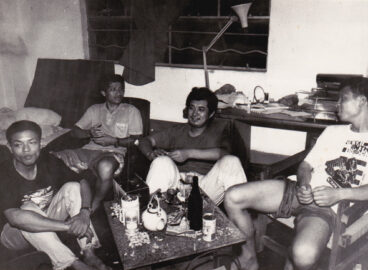When Xu Zhen established MadeIn Company in 2009, he announced the dissolution of his own artistic identity; later he asserted that Xu had become a corporate brand. In the six chapters of this videotaped conversation with Yu-Chieh Li, Xu discusses his practices in relation to MadeIn’s operations, which, from research and production through marketing and sales, serve Xu’s projects. (The company’s newly opened gallery in Shanghai will also represent other artists.) What are the implications of an explicitly corporate art practice, and are there precedents for this model?
This interview brings into focus different moments in Xu’s career. His experience of censorship and his early performance works, laced with sex and violence, reflect the links between his art and the sociopolitical environment in which it developed. In the late 1990s, for example, when the now internationally acclaimed artist was unknown and China’s art market had not yet surged, he resorted to smuggling his work into a group show. With MadeIn Company, Xu aims to surmount the problems that artists face in a society where cultural institutions are still held back by the state.
The interview was conducted at MadeIn Company in July 2014.



